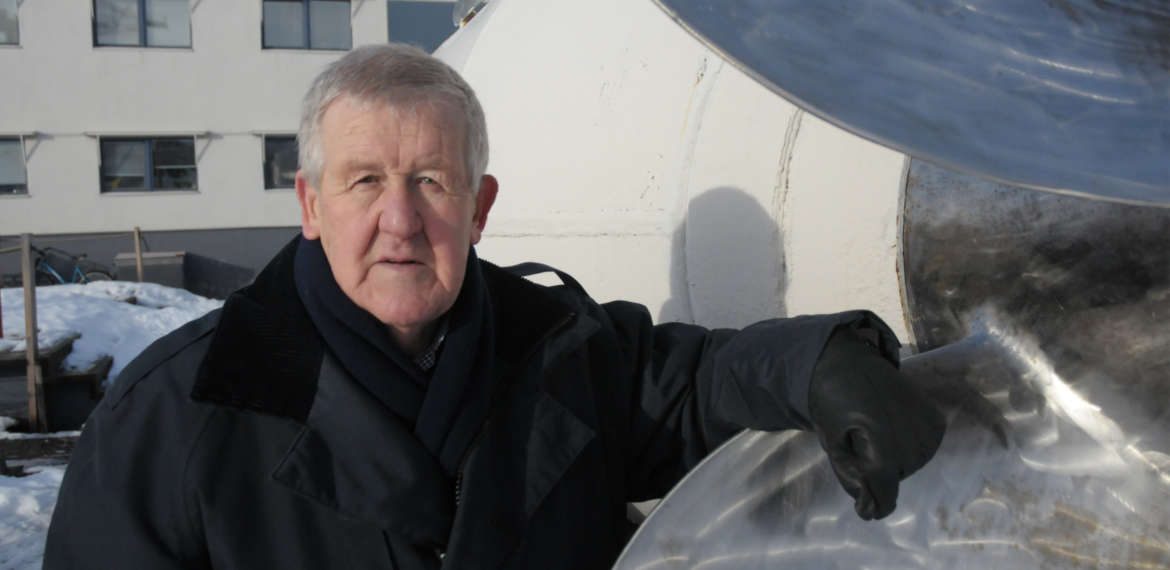Turku, for the sake of security
According to researcher, naval officer (ret.) Bo Österlund, the Turku–Åland–Stockholm route is important for Finland’s security of supply. The significance of the Port of Turku will be emphasised further, if traffic disruptions occur at the open sea.

The Finnish steel industry is largely dependent on the limestone imported from Gotland by sea. What would happen, if we could no longer purchase limestone from our western neighbour country?
Researcher, naval officer (ret.) Bo Österlund has written his doctoral thesis on the security of supply of Finland’s maritime traffic at the National Defence University. He uses limestone as one example to show that security of supply is not only related to crisis situations or changes of the security status that shake the entire society; it is present here and now.
Mr Österlund thinks that our national security of supply is not at a sufficient level. A key problem lies in the fact that there are too few ships registered in Finland.
“80 per cent of imports to Finland are carried by sea. 40 per cent of that is handled by ships sailing under the Finnish flag. If a key raw material has to be transported from further than the Baltic Sea region, the situation becomes challenging. It is highly likely that many others then have the same need and they need ships, too.”
“A source of raw material may change. There may be disruptions in distribution of energy.”
According to Mr Österlund, the solution is to increase the Finnish tonnage.
“Financial support from the state would be required in securing the tonnage. The government has stressed the importance of security of supply, but there is a conflict between their words and actions.”
Goods to the continent and Åland Islands
According to Mr Österlund, the Turku–Mariehamn–Stockholm route is significant for Finland’s security of supply.
“Passenger ferries carry lots general cargo and foods. The timeframe is such that e.g. many fresh products can be transported from the Netherlands to Turku in 24 hours and can be placed for sale first thing in the morning.”
“Turku also has good hinterland connections by road and rail.”
For the emergency supply of the Åland Islands the Turku–Mariehamn–Stockholm route is crucial.
“There are not much inventories in Åland, but the supply depends on the commodities transported to Mariehamn by 24 daily ships. If vessel traffic is disrupted, shops will soon run out of goods.”
Sheltered by the archipelago
Ships arrive in Turku through an extensive and sheltering archipelago. There are both upsides and downsides to that:
“The vessels have to sail more slowly. They may need help from tugboats and ice-breakers. In cases involving disruptions and exceptional conditions, a sheltering archipelago is, however, a benefit.”
The importance of the Port of Turku would increase further, if something really unpleasant happened, and traffic at the open sea were disrupted.
“Then the alternative sea route southwards would go from Turku via Åland Islands to Sweden and then along the Swedish coast towards the Danish straits.”
That route was used during the Continuation War when Soviet submarines prevented maritime traffic south of the island of Utö.
“The Swedish coastal fairway is 6.8 metres deep, so all of our vessels would not be able to use it. When purchasing new tonnage it should be taken into account that we also need vessels suited to distribution traffic, archipelago fairways and the Swedish coast with a low draught and ice reinforcements.”
“Moreover, it should be agreed with Sweden how Finland’s maritime traffic would be directed and controlled via its sheltered territorial waters.”
All possible scenarios have to be taken into account in the planning of security of supply.
Text and photo: Matti Välimäki
Doctoral thesis on pension
Commodore Bo Österlund, 72 years, had a long military career e.g. as Chief of Staff of the Coastal Fleet that operated in Turku, Commander of the Gulf of Finland Naval Command, and Commander of the Turku and Pori Military Province.
“After retiring I drew up a report on maritime traffic for the Emergency Supply Agency. At its presentation it was hinted that I could write a doctoral thesis on the subject. I took on the challenge and completed it in four years.”
